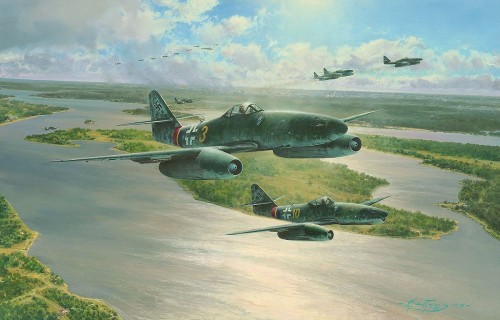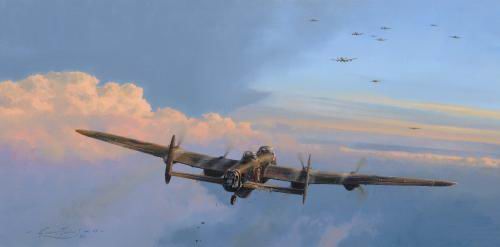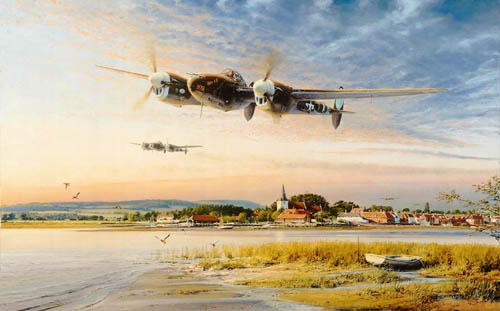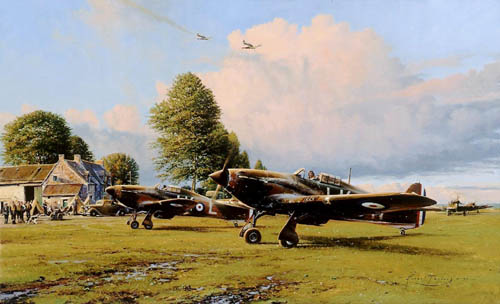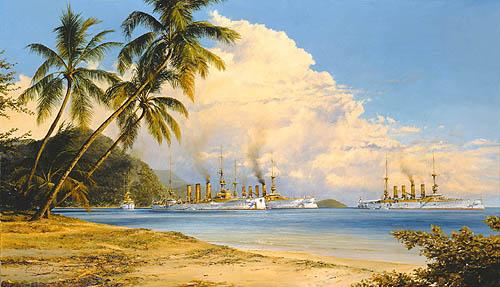Description
Stormbirds Rising
Print Size – 32” x 24”
Limited Edition of 150
Signed by:
Oberst Hermann Buchner Knight’s Cross / 58 victories
Oberleutnant Wolfgang Wollenweber Iron Cross First Class
Also available is Aces Edition of 115
Additionally signed by:
Major Erich Rudorffer Knight’s Cross with Oak Leaves & Swords / 222 victories
Leutnant Jorg Czpionka Iron Cross / 2 victories
Oberleutnant Walter Schuck Knight’s Cross with Oak Leaves / 206 victories
Leutnant Alfred Lambs 7 victories
Leutnant Norbert Hannig Iron Cross First Class / 42 victories
The Me262 was sleek, beautifully proportioned and deadly, and with a top speed of around 540mph was a 100mph faster than anything in the Allied arsenal. It could have changed the course of the war.
April 1945: and the end of the war was growing closer. By now the weather was improving and, as the days began to lengthen, the American Eighth Air Force was able to dispatch well over a thousand bombers, with a fighter escort to match, on some of the largest raids of the war. The Allies’ overwhelming strength meant the contest was all but one-sided; yet the expert pilots of the Luftwaffe were still a force to be reckoned with – especially when armed with their revolutionary Me262 jets.
Had Hitler recognized the jets’ full potential as a fighter, as Adolf Galland had pushed for, then the course of the war might have been very different. But he didn’t, and by the time this radical new jet was put into mass production as a fighter, it was too late to save Hitler’s Reich.
Although some 1,400 Me262s were built, rarely more than a couple of hundred were fully operational at any one time, continually hampered by shortages of fuel, spare parts and trained pilots. American factories, in contrast, could build that number of combat aircraft in a day.
Even so, Allied bombers had frequent contacts with Me262s, especially those of JG7, and had run into serious trouble from the large jet formations that the Gruppe had managed to assemble. Eight B-17s had been lost in one such encounter and the Fortress crews were more than wary of what they might expect as they battled through the skies above what remained of the Nazi heartland.
Robert Taylor, the master of aviation art, portrays the Me262s of III./JG7 in his powerful painting as a tribute to this revolutionary aircraft. He captures a scene during the final weeks of the war as Leutnant Hermann Buchner, by now one of the most famous jet Aces and recipient of the coveted Knight’s Cross, joins his fellow pilots of III./JG7 as they climb to intercept a large formation of American bombers having just left their base at Parchim. Below them the tranquillity of the meandering River Havel, flowing gracefully through the countryside west of Berlin, is in stark contrast to the deadly encounters that will soon take place overhead.

